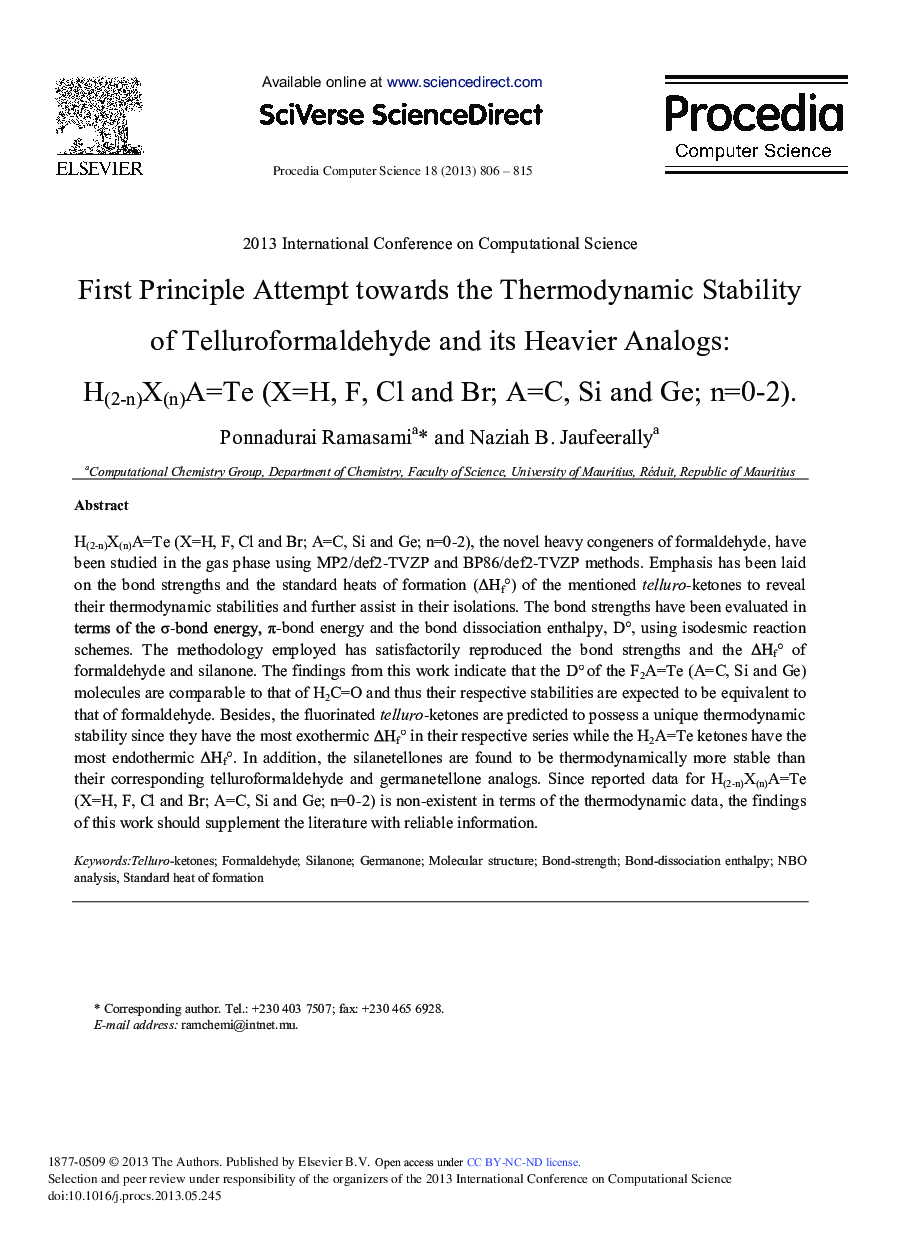| کد مقاله | کد نشریه | سال انتشار | مقاله انگلیسی | نسخه تمام متن |
|---|---|---|---|---|
| 490555 | 707499 | 2013 | 10 صفحه PDF | دانلود رایگان |

H(2-n)X(n)A=Te (X=H, F, Cl and Br; A=C, Si and Ge; n=0-2), the novel heavy congeners of formaldehyde, have been studied in the gas phase using MP2/def2-TVZP and BP86/def2-TVZP methods. Emphasis has been laid on the bond strengths and the standard heats of formation (ΔHf°) of the mentioned telluro-ketones to reveal their thermodynamic stabilities and further assist in their isolations. The bond strengths have been evaluated in terms of the σ-bond energy, π-bond energy and the bond dissociation enthalpy, D°, using isodesmic reaction schemes. The methodology employed has satisfactorily reproduced the bond strengths and the ΔHf° of formaldehyde and silanone. The findings from this work indicate that the D° of the F2A=Te (A=C, Si and Ge) molecules are comparable to that of H2C=O and thus their respective stabilities are expected to be equivalent to that of formaldehyde. Besides, the fluorinated telluro-ketones are predicted to possess a unique thermodynamic stability since they have the most exothermic ΔHf° in their respective series while the H2A=Te ketones have the most endothermic ΔHf°. In addition, the silanetellones are found to be thermodynamically more stable than their corresponding telluroformaldehyde and germanetellone analogs. Since reported data for H(2-n)X(n)A=Te (X=H, F, Cl and Br; A=C, Si and Ge; n=0-2) is non-existent in terms of the thermodynamic data, the findings of this work should supplement the literature with reliable information.
Journal: Procedia Computer Science - Volume 18, 2013, Pages 806-815